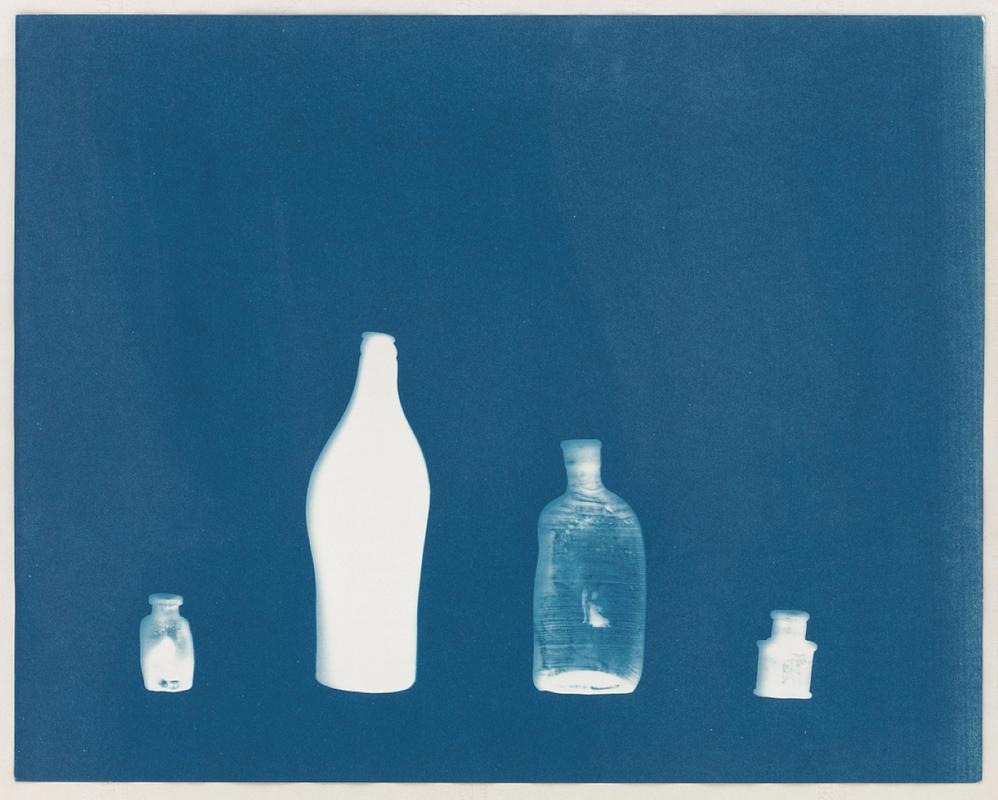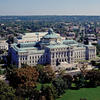More about Four A-bombed Bottles from Hiroshima

Sr. Editor
In Four A-bombed bottles from Hiroshima, elin O’Hara slavick uses real life artifacts from World War II and the cyanotype process to create a poetic and haunting relic of nuclear destruction.
In August of 1945, at the tail end of WWII, the United States dropped two atomic bombs on the cities of Hiroshima and Nagasaki in an effort to bring an end to the military conflict between the Allied forces and Japan. The effects were devastating, immediately killing over 30 percent of the population in both cities, the majority of casualties being civilians. Burns and radiation sickness killed more people over the following months, and exposure to radiation caused increases in leukemia and other cancers in individuals in range of the blast for years to come.
The devastation of these acts of war cannot be overstated, but you’ve probably heard much of this before in your U.S. history class. So let's leave the statistics and instead explore how slavick is able to reflect the immense loss caused by these historical events in this artwork. For this series of cyanotypes, slavick sourced artifacts from the Hiroshima Peace Memorial Museum, an institution founded in 1951 that collects belongings of victims, objects affected by the bombings, and testimonials from survivors in an effort to spread their message: “No More Hiroshimas.”
Cyanotypes are created by placing objects directly on photosensitive paper, exposing them to the sun, and then rinsing them in water. The result is essentially an imprint of an object without any detail, simplifying the image down to its outline and shadow. Slavick draws parallels between radiation exposure and the exposure process of photography involving light, saying, “When the bomb exploded it basically incinerated people, plants, bridges, everything, leaving either black or white ‘death’ shadows.” In this way, the blurry white images in a sea of melancholy blue are almost like ghosts, whispers of what was lost in the bombings.
Slavick’s cyanotypes are undeniably beautiful, and she admits that there may be ethical concerns using aesthetically pleasing artwork to address the horrific historical event and its real-world consequences. However, the artist thinks that there is more than one way to reflect trauma, and that her project has its own worthwhile purpose, apart from the gruesome imagery of documentary photography and video. “It’s more symbolic and conceptual,” she says, “A way to think about this lingering trauma and the effects of radiation.” She adds, “I do think beauty can be radical and subversive,”
Sources
- Baker, Kenneth. “'After Hiroshima,' by Elin O'Hara Slavick.” San Francisco Chronicle, August 3, 2013. https://www.sfchronicle.com/books/article/After-Hiroshima-by-Elin-O-Har….
- Bradner, Liesl. “U.S. Bombing Seen through Artist's Eye in 'after Hiroshima' Book.” Los Angeles Times, August 3, 2013. https://www.latimes.com/entertainment/arts/culture/la-et-cm-hiroshima-a….
- elin o'Hara slavick. Accessed January 11, 2022. http://www.elinoharaslavick.com/.
- “Museum History.” Hiroshima Peace Memorial Museum. Accessed January 18, 2022. https://hpmmuseum.jp/modules/info/index.php?action=PageView&page_id=67&….
- White, Amy. “On Hiroshima: Q&A with Elin O'Hara Slavick.” Burnaway, August 4, 2014. https://burnaway.org/magazine/temporal-rupture-performativity-artist-su….











